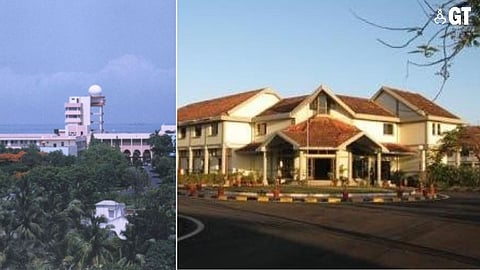

SRIDHAR D IYER
Being a destination for spice trade during the olden days, Goa has had a rich maritime history spanning centuries.
So, it is but natural that the State has a long-standing seafarers' tradition and is also home to two noteworthy oceanographic institutions where scientists are at the forefront of conducting scientific research on marine life and ocean dynamics.
FIRST INDIAN OCEAN EXPEDITION
The First International Indian Ocean Expedition (IIOE-1) was carried out between 1959 to 1965 from Kochi (Kerala). A total of 46 research vessels, both Indian and foreign, and researchers from 13 countries participated in the expeditions and collected various marine samples.
This was the initiation of large-scale oceanographic investigations in India.
Subsequently, on January 1, 1966, the National Institute of Oceanography (NIO) was founded in Goa. It is located at Dona Paula where the Mandovi and Zuari rivers meet the Arabian Sea.
NATIONAL INSTITUTE OF OCEANOGRAPHY
Subsequently, on January 1, 1966, the National Institute of Oceanography (NIO) was founded in Goa. It is located at Dona Paula, North Goa, where the Mandovi and Zuari rivers meet the Arabian Sea.
The NIO is one of the 39 constituent institutions, governed by the Council of Scientific & Industrial Research (CSIR, New Delhi), that study an array of scientific issues such as pharma products, leather, food, metallurgy, mining, natural products, instrumentation and many more.
NIO EXHIBITS
A section on marine archaeology, at NIO, showcases artefacts collected from the ancient sunken city of Dwarka (Gujarat), tusks of elephants recovered from ancient ships that sunk off Goa in the Arabian Sea and lead ingots from old ships that capsized offshore of Poompuhar (Tamil Nadu), in the Bay of Bengal.
It is also home to an aquarium that showcases tropical fish and live coral.
NIO also houses an aquarium that showcases tropical fish and live coral.
RESEARCH VESSELS
Scientists work in state-of-the-art laboratories and use specialised analytical instruments.
NIO has two research vessels, RV Sindhu Sadhana and RV Sindhu Sankalp that are fully equipped to collect various oceanographic data and samples for analysis.
KNOW ABOUT OCEANOGRAPHY
Groups of students can visit and view the displays in the foyer area of NIO after seeking prior permission. If there is a specific subject interest, then the visitors are taken to particular laboratories where they can interact with scientists.
NIO is open to the public on January 1 (Foundation Day) and September 26 (CSIR Foundation Day). On these days, short movies related to CSIR, NIO and oceanography are screened, talks are delivered on fascinating subjects and about careers in oceanography.
NIO is open to the public on January 1 (Foundation Day) and September 26 (CSIR Foundation Day).
NATIONAL CENTRE FOR POLAR AND OCEAN RESEARCH
The National Centre for Polar and Ocean Research (NCPOR) was founded on May 25, 1998, by the erstwhile Department of Development (now known as Ministry of Earth Sciences or MoES).
Built atop a hill at Sada, Vasco-da-Gama, one can get a stunning panoramic view of the Arabian Sea and some of the offshore islands from NCPOR. Formerly, it was called the National Centre for Antarctic and Ocean Research (NCAOR) as studies were carried out concerning Antarctica and the Southern Ocean.
After India launched the Artic programme in 2008, the institute was renamed. Research related to the Himalayan mountains (the third pole) is also undertaken here.
THINGS OF INTEREST AT NCPOR
At NCPOR, visitors can see exhibits and photographs of ice-breaker ships and the research works being undertaken. A life-size stuffed penguin welcomes you.
The centre has several advanced research instruments and equipment and also a laboratory where ice-cores from Antarctica are stored at sub-zero temperatures.
The annual expedition to Antarctica is launched from NCPOR for which an ice-breaker ship is chartered for a few months from abroad.
NCPOR has several advanced research instruments and equipment and also a laboratory where ice-cores from Antarctica are stored at sub-zero temperatures.
VISIT NIO AND NCPOR
CSIR-NIO and NCPOR are open from Monday to Friday, between 9 am to 5.30 pm, and are closed on national holidays. Entry is free. However, prior booking through the internet or phone calls can facilitate the visit of groups of people and students.
Whether you are a science student or a curious visitor, an hour or so spent at these two marine science institutions would be rewarding, revealing and an eye-opener about India’s capabilities in research, inventions and innovations in the vast domain of oceanographic studies.